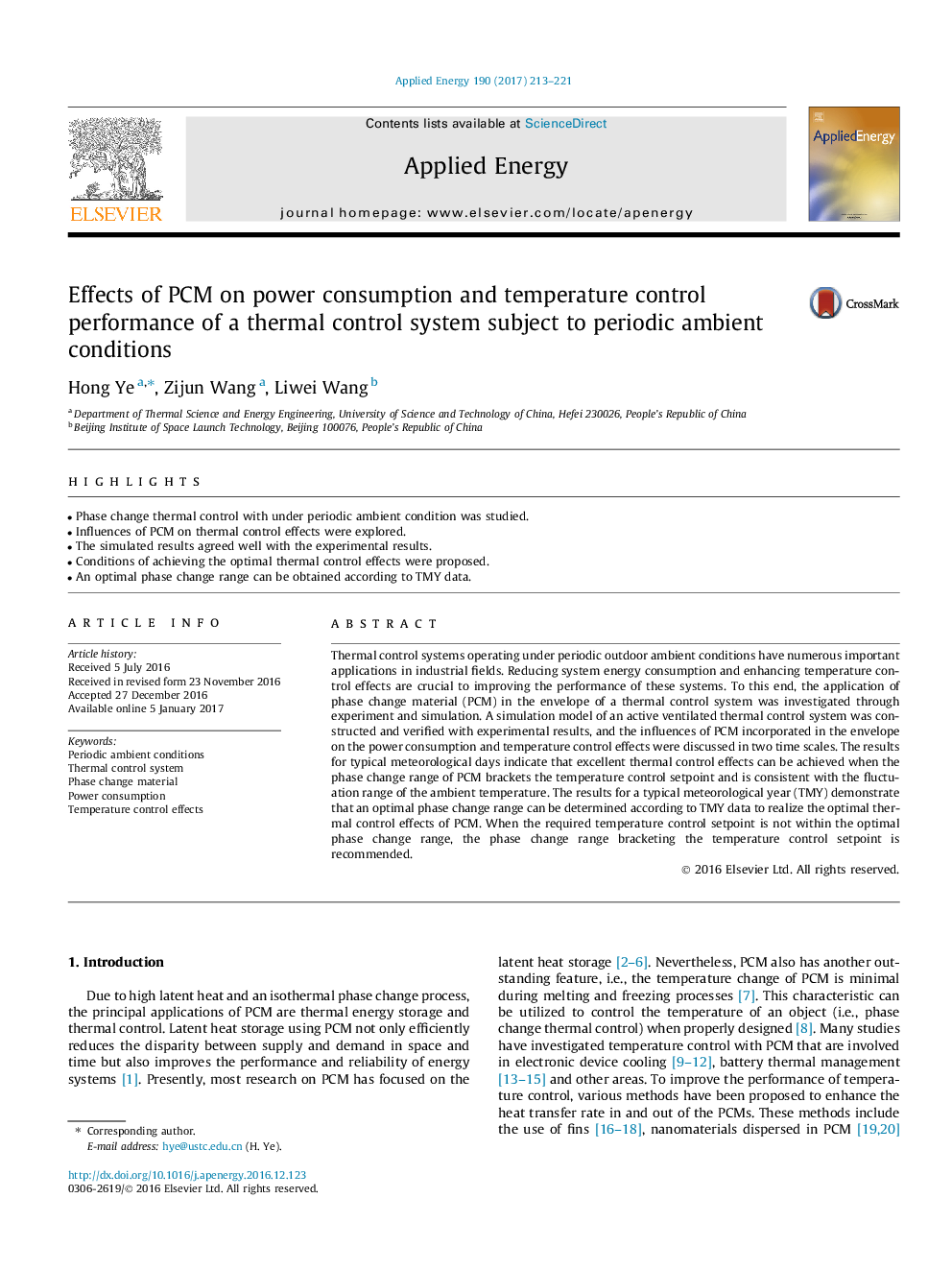| Article ID | Journal | Published Year | Pages | File Type |
|---|---|---|---|---|
| 6478477 | Applied Energy | 2017 | 9 Pages |
â¢Phase change thermal control with under periodic ambient condition was studied.â¢Influences of PCM on thermal control effects were explored.â¢The simulated results agreed well with the experimental results.â¢Conditions of achieving the optimal thermal control effects were proposed.â¢An optimal phase change range can be obtained according to TMY data.
Thermal control systems operating under periodic outdoor ambient conditions have numerous important applications in industrial fields. Reducing system energy consumption and enhancing temperature control effects are crucial to improving the performance of these systems. To this end, the application of phase change material (PCM) in the envelope of a thermal control system was investigated through experiment and simulation. A simulation model of an active ventilated thermal control system was constructed and verified with experimental results, and the influences of PCM incorporated in the envelope on the power consumption and temperature control effects were discussed in two time scales. The results for typical meteorological days indicate that excellent thermal control effects can be achieved when the phase change range of PCM brackets the temperature control setpoint and is consistent with the fluctuation range of the ambient temperature. The results for a typical meteorological year (TMY) demonstrate that an optimal phase change range can be determined according to TMY data to realize the optimal thermal control effects of PCM. When the required temperature control setpoint is not within the optimal phase change range, the phase change range bracketing the temperature control setpoint is recommended.
